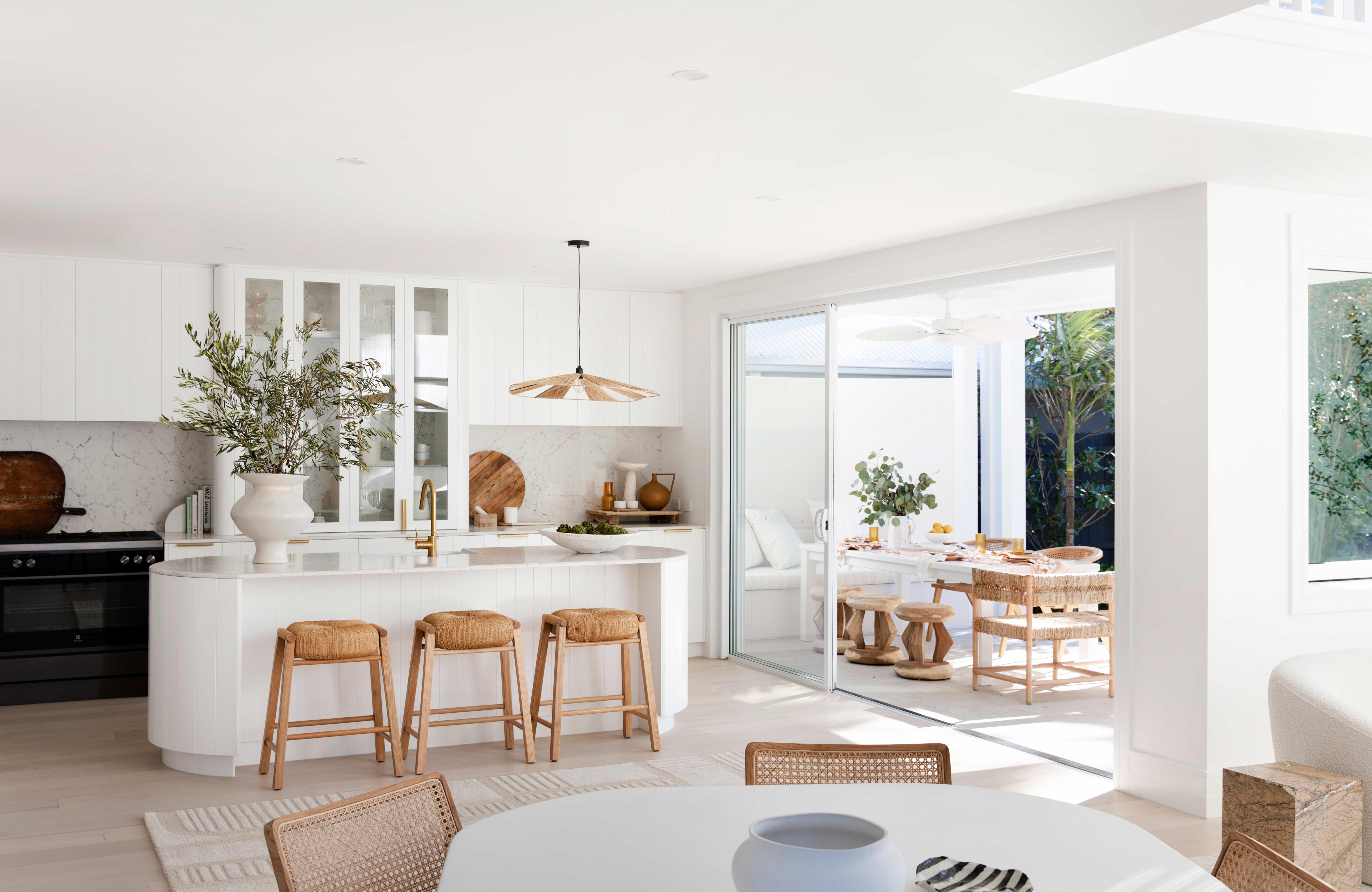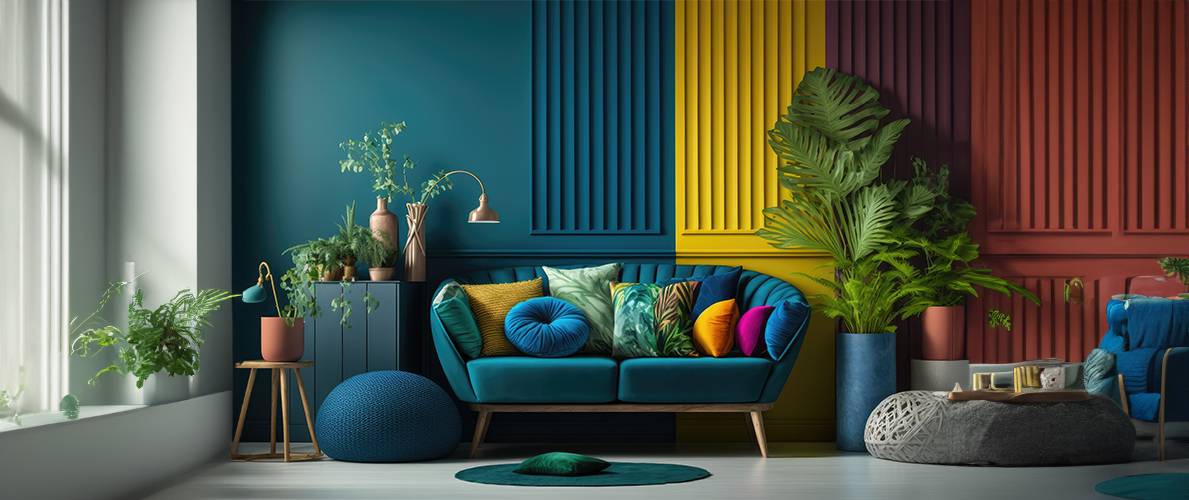Enhance your space with exclusive luxury interior design.
Enhance your space with exclusive luxury interior design.
Blog Article
Transform Your Home With Necessary Principles of Interior Style and Looks
By comprehending the impact of shade theory and the significance of appearance and patterns, one can produce rooms that are not just visually enticing but also deeply personal. Accomplishing this balance involves even more than plain decoration; it incorporates a calculated setup and a keen understanding of exactly how each aspect engages within a space.
Comprehending Shade Theory
Color theory is a fundamental facet of indoor design that considerably affects state of mind, perception, and general visual. Recognizing the concepts of color theory permits designers to develop spaces that reverberate emotionally with owners while meeting practical needs (miami luxury interior design). Shades can be categorized right into 3 primary types: key, secondary, and tertiary. Each classification plays a vital role in developing harmony within a room.
The mental effect of shades is profound; warm hues such as reds and oranges stimulate energy and warmth, while amazing tones like blues and environment-friendlies advertise calmness and harmony. The use of complementary colors boosts visual interest, developing striking contrasts that can raise a room's charm.
Neutral colors, on the various other hand, work as a flexible backdrop, enabling other style components to shine. It is necessary to take into consideration variables such as illumination and the space's function when choosing a color palette, as these can modify the perception of colors throughout the day.
Ultimately, a well-considered color design can transform a space, promoting a sense of comfort and design that straightens with the residents' preferences. Mastery of shade theory is, consequently, an essential skill for any kind of indoor developer aiming to develop harmonious and welcoming environments.
Accomplishing Balance in Layout
How can developers attain a sense of equilibrium in their areas? Accomplishing equilibrium in layout is basic to producing harmonious insides. Developers can utilize three main kinds of equilibrium: in proportion, unbalanced, and radial. Symmetrical equilibrium involves setting up components evenly around a main point, promoting a sense of order and serenity. This type commonly includes pairs of furniture or art work, improving aesthetic stability.
Asymmetrical equilibrium, on the other hand, counts on varying aspects that still attain a cohesive look. This strategy permits more dynamic and informal setups, supplying interest while maintaining equilibrium. By very carefully picking differing dimensions, shades, and textures, developers can produce a visually engaging area that really feels balanced yet energised.
Radial balance emphasizes a main centerpiece with aspects radiating exterior. This design is generally seen in circular designs, where furnishings and style produce a cohesive border that attracts the eye inward.
Eventually, attaining balance needs thoughtful consideration of scale, percentage, and the connections in between aspects. miami interior design. By masterfully using these equilibrium principles, designers can transform rooms right into atmospheres that really feel both cosmetically pleasing and functionally unified, enhancing the total experience for occupants
Significance of Spatial Understanding

A keen sense of spatial recognition allows developers to recognize prime focus within an area, guiding the audience's attention to essential attributes while maintaining a total sense of unity. It additionally Extra resources assists in the strategic positioning of lighting, which can significantly influence the understanding of space and state of mind. Recognizing spatial connections allows the designer to cater to the certain demands of inhabitants, guaranteeing that each location serves its desired objective without jeopardizing aesthetic appeals.
Ultimately, spatial recognition is crucial for taking full advantage of the potential of any kind of indoor room. By very carefully taking into consideration the interaction in between measurements, format, and function, developers can produce environments that not just fulfill practical requirements yet likewise stimulate a sense of comfort and charm, improving the total living experience.
Integrating Structure and Patterns
Accepting a varied array of structures and patterns can dramatically boost the visual and tactile appeal of an interior area. The critical use of numerous products-- such as timber, metal, material, and rock-- develops depth and passion, making a room feel extra welcoming and vibrant. Incorporating smooth surface areas with harsh appearances can develop an equilibrium that attracts the eye and engages the detects.
When integrating patterns, take into consideration both scale and repeating. Big patterns can serve as prime focus, while smaller, refined styles can match other components without overwhelming the room. Layering patterns, such as pairing floral cushions with candy striped throws, adds complexity and a feeling of consistency if performed attentively.
It is additionally critical to maintain a cohesive check this site out shade scheme, ensuring that textures and patterns interact as opposed to compete for attention. By selecting a couple of essential textures and patterns, you can create an unified aesthetic that shows your individual design while boosting the general setting of the space. Inevitably, the mindful incorporation of these components can transform a mundane space right into an innovative atmosphere abundant with personality and warmth.
Personalizing Your Room
Producing a room that shows your personality is important to accomplishing a really inviting setting. Personalization in interior layout permits you to infuse your unique design and passions into your home, transforming it from a simple sanctuary right into a shelter that speaks to that you are. Begin by selecting a go to the website color palette that reverberates with your feelings-- vibrant tones can invigorate, while soft tones use tranquility.
Integrate artwork and decor that reflect your enthusiasms, whether it be travel, nature, or abstract ideas. Showing personal collections, such as books, photos, or keepsakes, can stimulate treasured memories and develop focal points within a space. In addition, consider tailoring functional items, like upholstered furniture, to align with your aesthetic choices.

Verdict
In verdict, the transformation of a home with the vital principles of indoor layout and appearance requires a comprehensive understanding of color concept, balance, spatial awareness, structure, and personalization. Each component contributes dramatically to developing a harmonious and functional living atmosphere - miami luxury interior design. By attentively integrating these concepts, individuals can enhance the visual appeal and emotional vibration of their areas, ultimately promoting a home that mirrors special identities while offering comfort and usefulness
Report this page